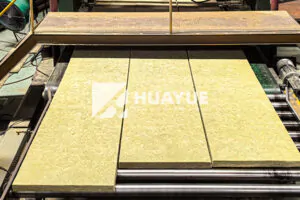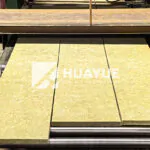What is rock wool insulation?
Struggling to keep your building comfortable and safe in extreme weather? You need a solution that saves energy and stands up to harsh conditions—without constant upkeep.
Rock wool insulation is a highly effective thermal and acoustic insulation material made from natural stone, offering strong fire resistance, water repellency, and long-term stability for buildings and industrial equipment.
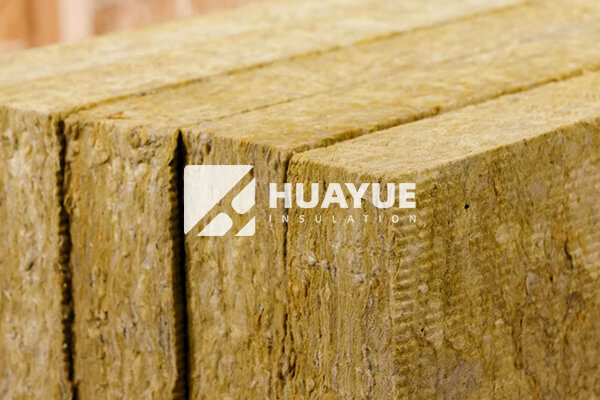
If you own or manage a building or facility, you may have faced the frustration of high energy bills and the stress of keeping your property safe from fire risks. These are not problems you want to keep solving every year. In this article, I will share my knowledge about rock wool insulation, its uses, how it’s made, and the reasons it stands out among insulation materials. Let’s explore what makes it a trusted choice for demanding environments.
How Is Rock wool Manufactured?
Ever wondered how hot lava rock turns into fluffy, high-performance insulation that protects buildings and tanks?
Rock wool insulation is made by melting natural rocks, such as basalt and diabase, at high temperatures. The molten rock is spun into fine fibers, which are then processed into boards, batts, or loose-fill insulation for various industrial and building uses.
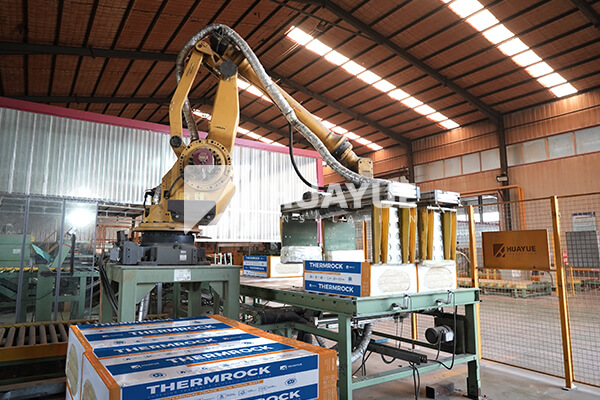
The journey of rock wool starts in a furnace, where natural stone is heated to over 1,400°C. I find it fascinating to watch this hard rock become a liquid. This liquid rock is spun rapidly using a spinning machine, stretching the material into fine fibers—much like how cotton candy is made. These fibers bind together due to their own stickiness and sometimes a small amount of binder is added for extra strength. Once cooled, the fibers are formed into mats or boards, then cut into shapes for easy installation. Here’s a simplified breakdown:
| Process Step | Description |
|---|---|
| Raw Material Input | Basalt, diabase, and sometimes slag |
| Melting | Heated to 1,400°C in a furnace |
| Fiberization | Spun into fibers using high-speed wheels |
| Forming | Collected and shaped into mats or boards |
| Cooling & Cutting | Cooled, then cut to size for end use |
When I saw these production lines in action at our own facility, the mix of power and precision impressed me. Every batch is tested for density, thickness, and fire resistance. That’s part of why rock wool delivers consistent, robust performance in the field.
What is ROCK WOOL insulation used for?
Are you searching for a solution that insulates tanks, walls, or industrial pipes from heat, cold, and fire, all at once?
Rock wool insulation is mainly used in buildings (walls, roofs, floors), industrial plants, and equipment like tanks or pipelines. It offers superior protection against heat loss, fire, and noise, making it ideal for energy efficiency and safety in many sectors.
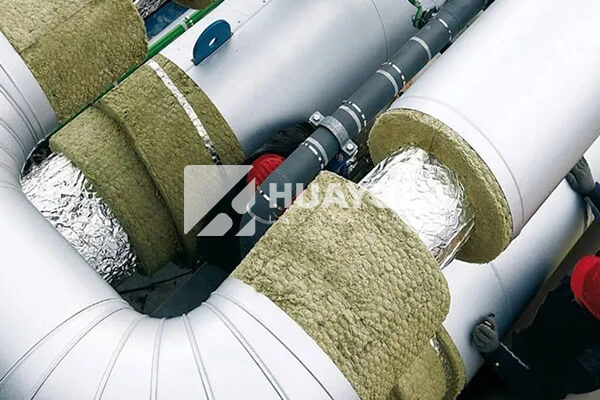
I work with many different customers who use rock wool for more than just keeping heat in. In construction, rock wool is a trusted choice for external walls, curtain walls, roof decks, and fire barriers. In industry, it insulates process tanks, cryogenic storage, and power plant piping. Its fire resistance meets demands in high-risk environments. I have seen how chemical plants, like the ones managed by Hans in Germany, use rock wool to protect their tanks from temperature swings while preventing fire from spreading if accidents happen. The non-combustible nature of rock wool gives facility managers one less thing to worry about. Here is where I see rock wool most often:
| Sector | Application Example |
|---|---|
| Commercial Buildings | Wall and roof insulation |
| Industrial Facilities | Process tanks, pipe insulation |
| Energy Generation | Boilers, turbines, ducts |
| Marine & Offshore | Ship engine rooms, bulkheads |
For both large and small projects, the reliability of rock wool insulation often allows customers to lower their maintenance budgets and meet safety codes at the same time.
Can ROCK WOOL be used for soundproofing?
Tired of noisy machinery rattling your nerves or open-plan spaces that echo every footstep?
Rock wool insulation is an excellent soundproofing material. Its dense, open-fiber structure traps and dampens airborne noise, making it a go-to choice for acoustic control in both industrial and residential settings.

Many people know rock wool for its thermal properties but overlook its impressive sound-blocking power. I have worked on several projects—both for offices and factories—where unwanted noise was a big problem. The open, mineral-fiber network of rock wool absorbs sound waves. It reduces echo and keeps machinery or street sounds from passing through walls. This can mean a quieter workspace, a more peaceful home, or a safer industrial plant where equipment noise does not disrupt nearby systems. Here are key points about its soundproofing ability:
Soundproofing Benefits Table
| Usage | Sound Reduction Benefit | Why It Works |
|---|---|---|
| Partitions/Walls | Dampens airborne sound | Open fiber structure traps vibrations |
| Ceilings/Floors | Blocks impact and transferred noise | Mass and fiber density interrupt path |
| Equipment enclosures | Limits loud process noise | Thermal + acoustic shielding |
From first-hand experience, installing rock wool often makes an immediate difference, especially in mechanical rooms or residential dividing walls.
Is ROCK WOOL insulation better than fiberglass?
You might be weighing your options: Should you choose rock wool or fiberglass for your next insulation project?
Rock wool insulation offers superior fire and moisture resistance compared to fiberglass, along with greater density for better sound and thermal performance. However, fiberglass is lighter and often less expensive.
When I advise clients, I always explain that the “best” insulation depends on the application. Fiberglass remains attractive for projects where upfront cost and low weight matter. But when it comes to long-term reliability and safety, I have found rock wool wins in many situations. It resists high temperatures and does not hold water, so you will not find it sagging, fostering mold, or catching fire. Rock wool is denser, so it blocks sound better too. Here’s a side-by-side breakdown:
| Feature | Rock Wool | Fiberglass |
|---|---|---|
| Fire Resistance | Non-combustible | Melts, can burn |
| Water Resistance | Repels water | May absorb moisture |
| Acoustic Performance | Very high | Moderate |
| Weight & Flexibility | Heavier, stiffer | Lighter, flexible |
| Cost | Higher | Lower |
Some customers still choose fiberglass for cost reasons, but each year I see more engineers and facility managers like Hans shifting to rock wool for its stability, fire safety, and reliability.
Benefits of Stone Wool Insulation
Why are so many professionals switching their budgets to stone wool insulation right now?
The top benefits of stone wool are its fire resistance, water repellency, sound absorption, durability, and sustainable raw materials, making it a premium choice for demanding insulation needs.
I am a big believer in stone wool because I see its strengths firsthand in industrial and commercial projects. One of the greatest benefits is non-combustibility; stone wool does not catch fire, so it offers serious peace of mind for tank insulation or high-rise buildings. It stays effective, year after year, even if exposed to water. It has a long life with almost no drop in performance, so you do not keep replacing it. Its open fiber structure delivers not only warmth but a remarkably quiet environment—something my customers always appreciate once it’s installed. Finally, since it’s made from natural rock, it is sustainable and easy to recycle. Here’s a table summarizing the benefits:
| Key Benefit | Description | Why It Matters |
|---|---|---|
| Fire Safety | Non-combustible material | Reduces risk, meets fire codes |
| Moisture Resistance | Repels water, resists mold | Longevity, healthier indoor environment |
| Sound Absorption | High noise reduction coefficient | Better comfort, less workplace distraction |
| Long Service Life | Stable under harsh conditions | Fewer replacements, lower life-cycle cost |
| Sustainability | Made from abundant natural stone | Lower environmental impact |
Over the years, I have seen stone wool evolve into a go-to solution, especially where safety, comfort, and long-term value are top priorities.
Conclusion
Rock wool insulation combines durability, fire safety, noise control, and strong energy performance, making it a smart, reliable choice for modern buildings and industrial facilities.
You may also be interested in:
Ready to Get Started?
Get in touch with our experts for personalized solutions tailored to your needs.
Get Free QuoteLatest Articles

Glass Wool Fire Rating: How Safe Is Your Insulation?
Dec 25, 2025
Let's Work Together
Ready to take your business to the next level? Get in touch with our team of experts and let's discuss how we can help you achieve your goals.
Get Free Solutions
